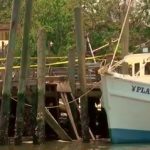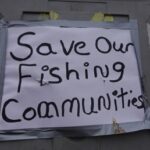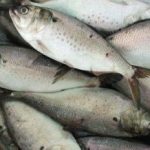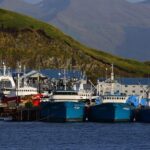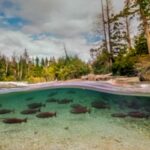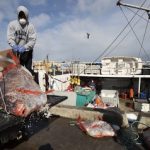Daily Archives: February 22, 2017
AK seafood earnings, poundage outpaced by Washington state
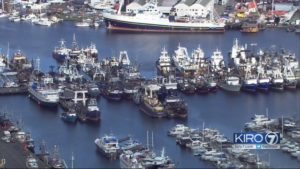 Alaska’s seafood industry puts more people to work than any other private industry, topping 60,000 workers in 2015. Of that, less than half – 27,600 – were Alaska residents. And while 71 percent of active fishing permit holders call Alaska home, most of the gross earnings go to the state of Washington. Based on numbers from the United Fishermen of Alaska’s annual Fish Facts, resident fishing permit holders made gross dockside earnings of just over $602 million two years ago. That compares to more than $904 million by nearly 6,580 Washington-based permit holders and crew. Fishermen from Oregon took home more than $126 million from Alaska’s fisheries and Californians pocketed nearly $28 million. That adds up to more than $1 Billion flowing out of state by non-resident fishermen. Listen to the audio report, read the rest here 17:29
Alaska’s seafood industry puts more people to work than any other private industry, topping 60,000 workers in 2015. Of that, less than half – 27,600 – were Alaska residents. And while 71 percent of active fishing permit holders call Alaska home, most of the gross earnings go to the state of Washington. Based on numbers from the United Fishermen of Alaska’s annual Fish Facts, resident fishing permit holders made gross dockside earnings of just over $602 million two years ago. That compares to more than $904 million by nearly 6,580 Washington-based permit holders and crew. Fishermen from Oregon took home more than $126 million from Alaska’s fisheries and Californians pocketed nearly $28 million. That adds up to more than $1 Billion flowing out of state by non-resident fishermen. Listen to the audio report, read the rest here 17:29
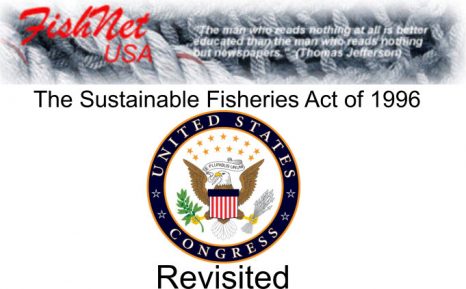
The Sustainable Fisheries Act – January 11, 2000 Revisited
I’ve been reviewing my past writings to gauge which, if any, have aged gracefully and which haven’t. I’ll be redistributing those that I think were particularly noteworthy, either because they were – and perhaps still are – on target or because they weren’t – or aren’t. The following addresses some of the more onerous provisions of the Sustainable Fisheries Act of 1996, which at the time were being fully implemented. I’ll leave it up to you to determine whether I hit this nail on the head or not. I’d be really interested to hear what you think. Nils Stolpe. From the article: Under the provisions of the federal Sustainable Fisheries Act (SFA), at any point when the populations of each of these competing species aren’t at MSY they are considered to be “overfished” and stringent harvest restrictions implementing strict rebuilding schedules (to MSY) are mandated. By requiring that all species be at their MSY, our coastal waters are expected in the SFA to support a level of overall production that is ecologically impossible, and fishermen, both recreational and commercial, are expected to reduce their catch to meet this impossible standard. Continue reading the article here 14:45
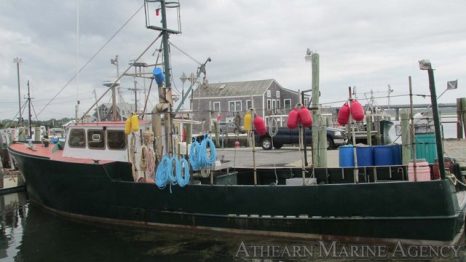
Athearn Marine Agency Boat of the Week: 55′ RI Marine Steel Offshore Lobster Boat with traps, permit
Specifications, information and 28 photo’s click here To see all the boats in this series, Click here 12:05
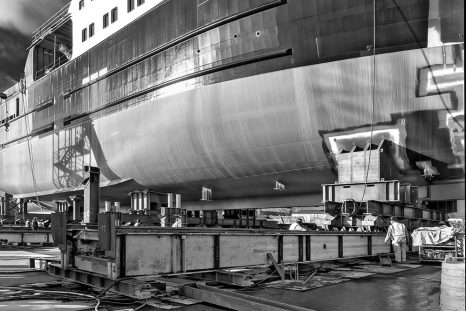
Revisited: Americas Finest – Floating Steel Follow the construction of a Bering Sea Fishing Trawler from start to finsh
The Big Move! This image encapsulates this monumental event for me as Americas Finest moves laterally (West) to get into a northern launch position as she points towards Alaska, her destiny. How to move 2900 tons of steel on land, stay tuned! Here she is, Americas Finest, view Weeks 82 and next week (83). See her get prepared to be moved laterally (sidetracking) to a new position that will be her final orientation before her launch. To view an incredible assortment of photo’s and review the progress, click here floatingsteel.com 10:53
Ottawa to invest in ‘fisheries innovation’ for Atlantic Canada following EU trade deal
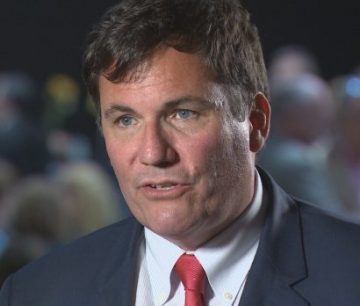 With Canada’s trade deal with the European Union on track to come into force provisionally within weeks, the federal government is set to announce a new fisheries innovation fund. But don’t portray this new money as a way to compensate Atlantic Canada, Fisheries Minister Dominic LeBlanc told CBC News last week. “I didn’t say compensation. That was your word,” LeBlanc said after an announcement in Vancouver last week. “What I said is that we’re prepared to work with provinces to look for a way to make our fishing industry the most innovative, productive, sustainable and globally competitive that we can.” Compensation was what Newfoundland and Labrador was looking for in the face of the Comprehensive Economic and Trade Agreement (CETA), which will prevent Canadian provinces from placing any export restrictions on raw fish. Continue reading the story here 08:58
With Canada’s trade deal with the European Union on track to come into force provisionally within weeks, the federal government is set to announce a new fisheries innovation fund. But don’t portray this new money as a way to compensate Atlantic Canada, Fisheries Minister Dominic LeBlanc told CBC News last week. “I didn’t say compensation. That was your word,” LeBlanc said after an announcement in Vancouver last week. “What I said is that we’re prepared to work with provinces to look for a way to make our fishing industry the most innovative, productive, sustainable and globally competitive that we can.” Compensation was what Newfoundland and Labrador was looking for in the face of the Comprehensive Economic and Trade Agreement (CETA), which will prevent Canadian provinces from placing any export restrictions on raw fish. Continue reading the story here 08:58
Women in Oregon fishing industry have important, but sometimes invisible role
 Women have always played an important role in Oregon’s commercial fishing industry, even if they don’t actually fish or work on boats – but a new study indicates their roles are changing. The research, funded by Oregon Sea Grant and published in the journal Marine Policy, was based on a series of oral-history interviews conducted mainly with fishermen and their wives. The findings could help government agencies set policies that take into account their potential impacts on the well-being of entire fishing communities, said Flaxen Conway, a community outreach specialist with Oregon Sea Grant Extension and a co-author of the paper. Continue reading the article here 08:35
Women have always played an important role in Oregon’s commercial fishing industry, even if they don’t actually fish or work on boats – but a new study indicates their roles are changing. The research, funded by Oregon Sea Grant and published in the journal Marine Policy, was based on a series of oral-history interviews conducted mainly with fishermen and their wives. The findings could help government agencies set policies that take into account their potential impacts on the well-being of entire fishing communities, said Flaxen Conway, a community outreach specialist with Oregon Sea Grant Extension and a co-author of the paper. Continue reading the article here 08:35
AMSEA to hold two Fishing Vessel Drill Conductor Workshops in South Carolina in March
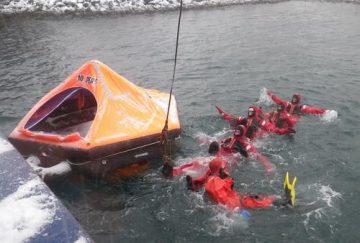 Alaska Marine Safety Education Association workshops meet the U. S. Coast Guard training requirements for drill conductors on documented commercial fishing vessels operating beyond the federal boundary line. On Thursday, March 9, a workshop will be conducted in Murrells Inlet from 8:00 a.m. to 8:00 p.m. at the Murrells Inlet Community Center, 4462 Murrells Inlet Road. A second workshop will be conducted on Saturday, March 11 in McClellanville at the McClellanville Town Office, 405 Pinckney Street. Instructor Michael Lawson will cover man-overboard recovery and firefighting, emergency position-indicating radio beacon stations, flares and maydays, emergency drills, helicopter rescue, life rafts and abandon ship procedures, personal floatation devices, immersion suits and cold-water survival skills. The workshop will include an “in-the-water” practice session for participants to practice survival skills. Interested mariners may register for the workshops online at www.amsea.org or call AMSEA at 907-747-3287. Link 07:15
Alaska Marine Safety Education Association workshops meet the U. S. Coast Guard training requirements for drill conductors on documented commercial fishing vessels operating beyond the federal boundary line. On Thursday, March 9, a workshop will be conducted in Murrells Inlet from 8:00 a.m. to 8:00 p.m. at the Murrells Inlet Community Center, 4462 Murrells Inlet Road. A second workshop will be conducted on Saturday, March 11 in McClellanville at the McClellanville Town Office, 405 Pinckney Street. Instructor Michael Lawson will cover man-overboard recovery and firefighting, emergency position-indicating radio beacon stations, flares and maydays, emergency drills, helicopter rescue, life rafts and abandon ship procedures, personal floatation devices, immersion suits and cold-water survival skills. The workshop will include an “in-the-water” practice session for participants to practice survival skills. Interested mariners may register for the workshops online at www.amsea.org or call AMSEA at 907-747-3287. Link 07:15


































